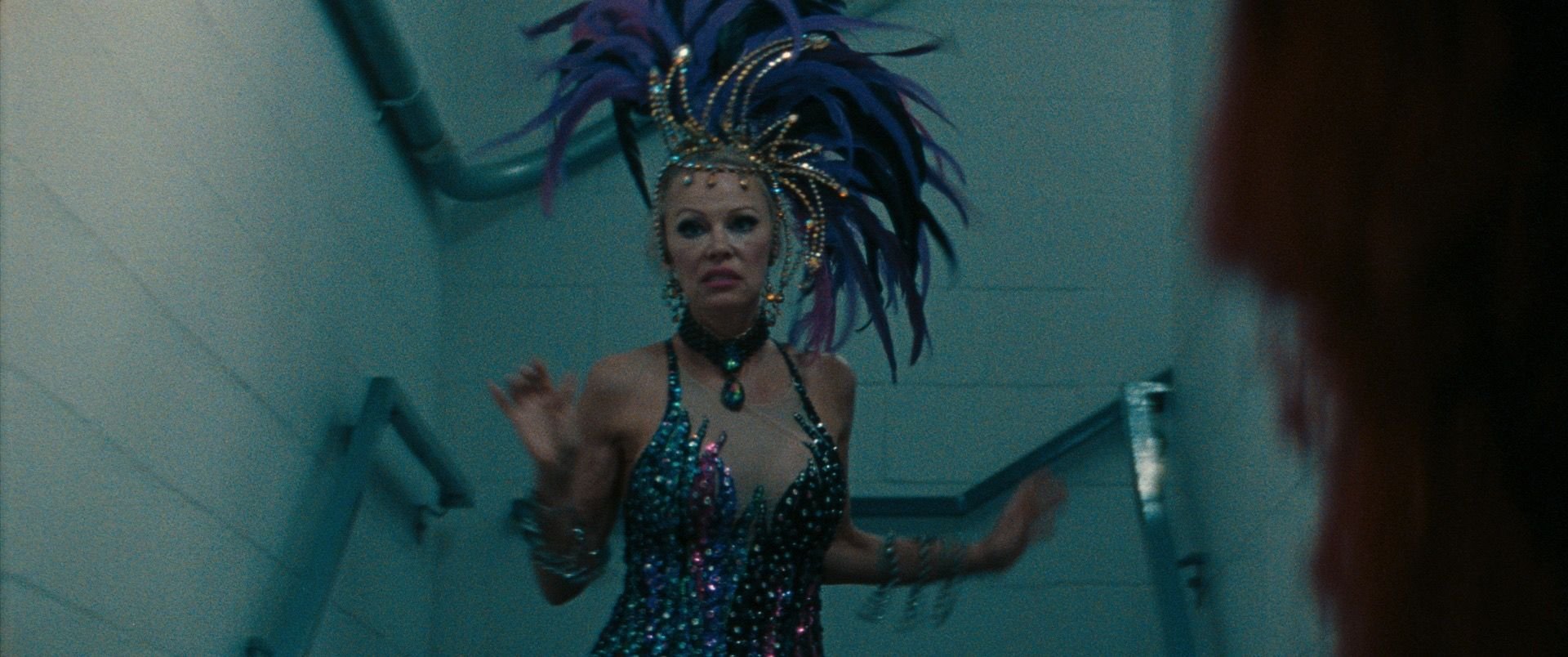Review: 'The Last Showgirl' is a thin drama about an aging Vegas performer, but Pamela Anderson dazzles in the title role
Like its due-for-a-comeback star and the faded character she plays, “The Last Showgirl” is flawed and undeniably fascinating, a fractured mirror held up to our obsessions with beauty, age and the outwardly beautiful but inwardly cruel place known as Las Vegas.
Kate Gersten, a TV writer making her feature-film debut here, centers her story on Shelly, one of the performers in “Le Razzle Dazzle,” a Vegas stage show featuring dozens of female performers wearing rhinestones, feathers, G-strings and sometimes not much else. Shelly has been with the show for 30 years, and is fully immersed in the legacy such shows have on The Strip. So she’s in the hardest position when the show’s quietly gruff stage manager, Eddie (Dave Bautista), announces that the casino’s new owners plan to close the show in two weeks.
Shelly — played by the former “Baywatch” icon Pamela Anderson, now 57 — is at a loss to handle the news. She refuses to audition for the raunchier striptease fare, the way her younger co-stars, Mary-Anne (Brenda Song) and Josie (Kiernan Shipka), have. She’s not thrilled with the idea of a demotion to cocktail waitress, though her gambling-addicted best pal Annette (Jamie Lee Curtis) tells her she can get Shelly a job easily.
Shelly finds her decision complicated by the arrival of Hannah (Billie Lourd), her college-age daughter. Hannah’s arrival reminds Shelly of the choices, not all of them good, she made to stay on the stage for as long as she did — and what she sacrificed, like a close relationship with her daughter.
There’s a delicately cracked beauty in the way director Gia Coppola (Francis’ granddaughter, and Sofia’s niece) captures the surface radiance of Vegas. Many of the outside shots happen just before sunset and after sunrise, as the low sun gorgeously catches the sights at their own level.
Likewise, Coppola’s gentle, unhurried camera takes in its actors naturally, not falsifying the chintzy glamor n which they live. Curtis gets one of the movie’s best moments, as Annette takes a break from serving watered-down drinks to slot-machine stuffers and performs an impromptu dance to Bonnie Tyler’s “Total Eclipse of the Heart” — a moment of defiance and defeat all at once.
“The Last Showgirl” belongs to Anderson, even when Gersten’s pared-down script lets her down. The role may be narrowly tailored for Anderson’s talents, but it fits her like a catsuit. Anderson finds the optimism, and maybe the self-delusion, in Shelly’s attempts to carry on like the performer she was 30 years earlier — and the battered but unbroken spirit that still believes the rhinestone glitz of Las Vegas has some sparkle.
——
‘The Last Showgirl’
★★★
Opens Friday, January 10, in theaters. Rated R for language and nudity. Running time: 89 minutes.







